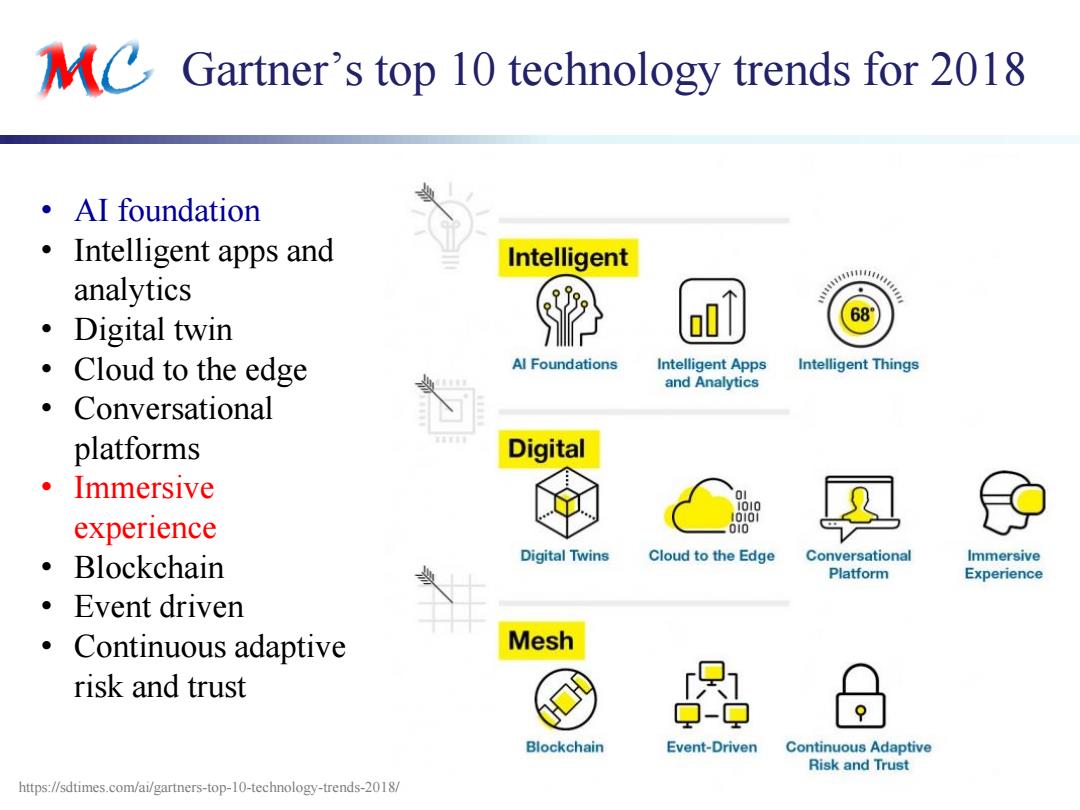
MC Gartner's top 10 technology trends for 2018 ·AI foundation Intelligent apps and Intelligent analytics 68 ·Digital twin 。 Cloud to the edge Al Foundations Intelligent Apps Intelligent Things and Analytics Conversational platforms Digital Immersive experience 010 ·Blockchain Digital Twins Cloud to the Edge Conversational Immersive Platform Experience ·Event driven Continuous adaptive Mesh risk and trust - Blockchain Event-Driven Continuous Adaptive Risk and Trust https://sdtimes.com/ai/gartners-top-10-technology-trends-2018/
{ynh,cxh}@ustc.edu.cn Gartner’s top 10 technology trends for 2018 22 • AI foundation • Intelligent apps and analytics • Digital twin • Cloud to the edge • Conversational platforms • Immersive experience • Blockchain • Event driven • Continuous adaptive risk and trust https://sdtimes.com/ai/gartners-top-10-technology-trends-2018/
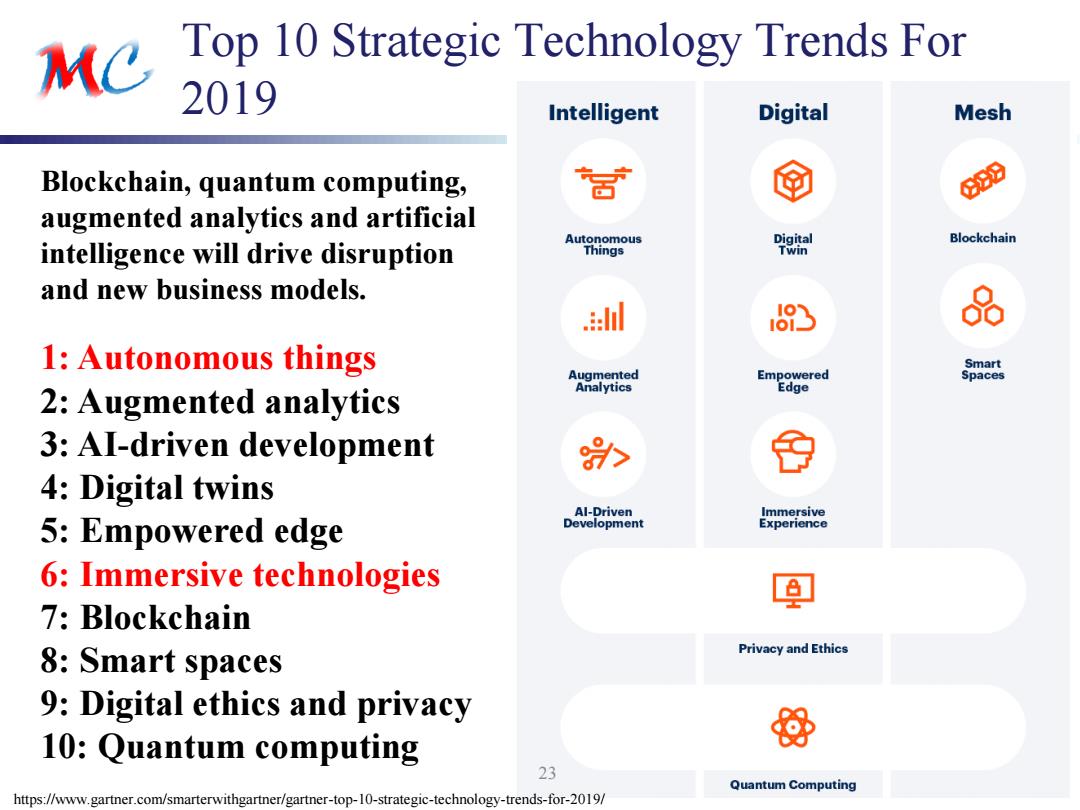
Me Top 10 Strategic Technology Trends For 2019 Intelligent Digital Mesh Blockchain,quantum computing, 88 augmented analytics and artificial Autonomous wn Blockchain intelligence will drive disruption Things and new business models. .:Ml 3 1:Autonomous things Smart Augmented Empowered Spaces Analytics Edge 2:Augmented analytics 3:AI-driven development 4:Digital twins Al-Driven Immersive 5:Empowered edge Development Experience 6:Immersive technologies 7:Blockchain 8:Smart spaces Privacy and Ethics 9:Digital ethics and privacy 10:Quantum computing 23 Quantum Computing https://www.gartner.com/smarterwithgartner/gartner-top-10-strategic-technology-trends-for-2019/
{ynh,cxh}@ustc.edu.cn Top 10 Strategic Technology Trends For 2019 23 https://www.gartner.com/smarterwithgartner/gartner-top-10-strategic-technology-trends-for-2019/ Blockchain, quantum computing, augmented analytics and artificial intelligence will drive disruption and new business models. 1: Autonomous things 2: Augmented analytics 3: AI-driven development 4: Digital twins 5: Empowered edge 6: Immersive technologies 7: Blockchain 8: Smart spaces 9: Digital ethics and privacy 10: Quantum computing
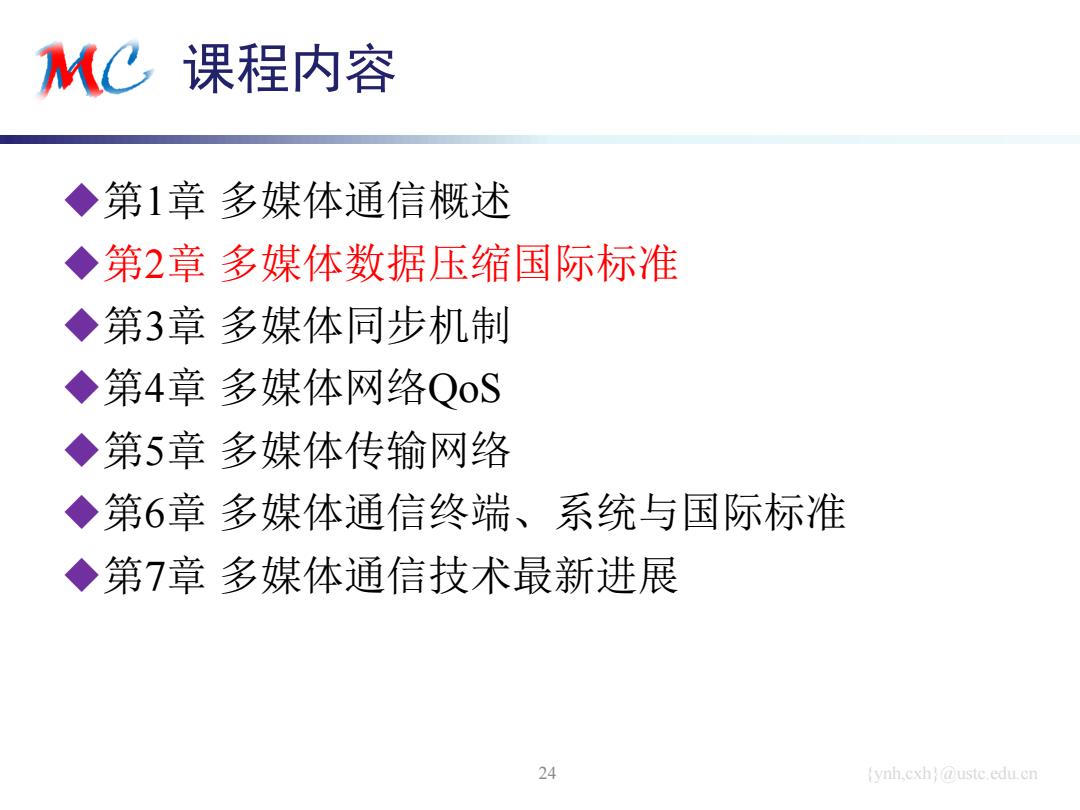
KC课程内容 ◆第1章多媒体通信概述 ◆第2章多媒体数据压缩国际标准 ◆第3章多媒体同步机制 ◆第4章多媒体网络QoS ◆第5章多媒体传输网络 ◆第6章多媒体通信终端、系统与国际标准 ◆第7章多媒体通信技术最新进展 24 ynh.cxh @ustc.edu.cn
{ynh,cxh}@ustc.edu.cn 课程内容 第1章 多媒体通信概述 第2章 多媒体数据压缩国际标准 第3章 多媒体同步机制 第4章 多媒体网络QoS 第5章 多媒体传输网络 第6章 多媒体通信终端、系统与国际标准 第7章 多媒体通信技术最新进展 24
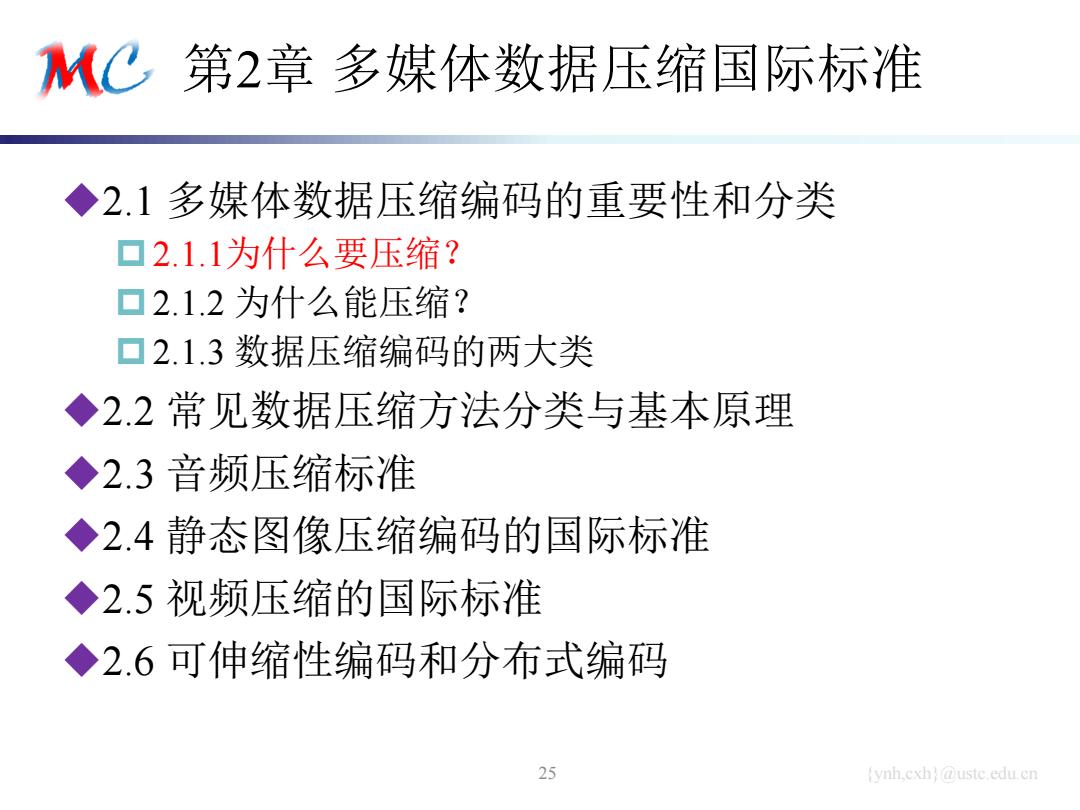
KC第2章多媒体数据压缩国际标准 ◆2.1多媒体数据压缩编码的重要性和分类 ▣2.1.1为什么要压缩? ▣2.1.2为什么能压缩? ▣2.1.3数据压缩编码的两大类 ◆2.2常见数据压缩方法分类与基本原理 ◆2.3音频压缩标准 ◆2.4静态图像压缩编码的国际标准 ◆2.5视频压缩的国际标准 ◆2.6可伸缩性编码和分布式编码 25 ynh.cxh @ustc.edu.cn
{ynh,cxh}@ustc.edu.cn 第2章 多媒体数据压缩国际标准 2.1 多媒体数据压缩编码的重要性和分类 2.1.1为什么要压缩? 2.1.2 为什么能压缩? 2.1.3 数据压缩编码的两大类 2.2 常见数据压缩方法分类与基本原理 2.3 音频压缩标准 2.4 静态图像压缩编码的国际标准 2.5 视频压缩的国际标准 2.6 可伸缩性编码和分布式编码 25
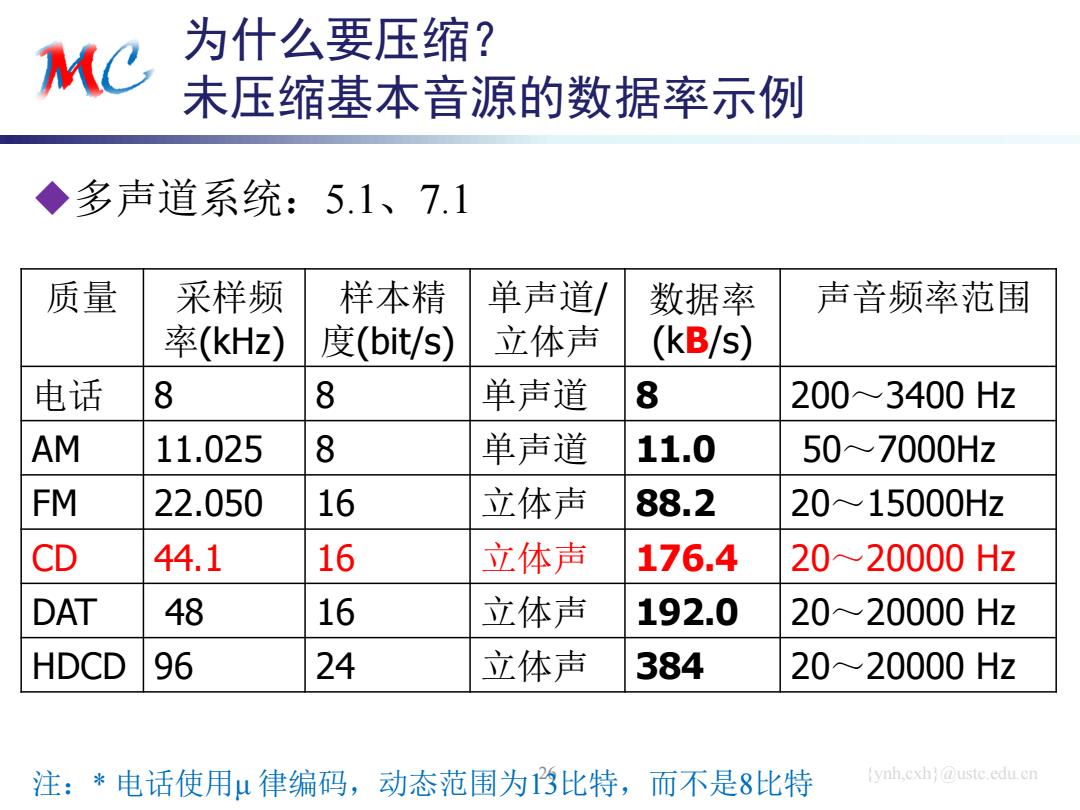
Me 为什么要压缩? 未压缩基本音源的数据率示例 ◆多声道系统:5.1、7.1 质量 采样频 样本精 单声道/ 数据率 声音频率范围 率(kHz) 度(bit/s) 立体声 (kB/s) 电话 8 8 单声道 8 200~3400Hz AM 11.025 8 单声道 11.0 50~7000Hz FM 22.050 16 立体声 88.2 20~15000Hz CD 44.1 16 立体声 176.4 20~20000Hz DAT 48 16 立体声 192.0 20~20000Hz HDCD 96 24 立体声 384 20~20000Hz 注:*电话使用μ律编码,动态范围为3比特,而不是8比特 (ynh,cxh@ustc.edu.cn
{ynh,cxh}@ustc.edu.cn 为什么要压缩? 未压缩基本音源的数据率示例 多声道系统:5.1、7.1 26 质量 采样频 率(kHz) 样本精 度(bit/s) 单声道/ 立体声 数据率 (kB/s) 声音频率范围 电话 8 8 单声道 8 200~3400 Hz AM 11.025 8 单声道 11.0 50~7000Hz FM 22.050 16 立体声 88.2 20~15000Hz CD 44.1 16 立体声 176.4 20~20000 Hz DAT 48 16 立体声 192.0 20~20000 Hz HDCD 96 24 立体声 384 20~20000 Hz 注:* 电话使用μ 律编码,动态范围为13比特,而不是8比特